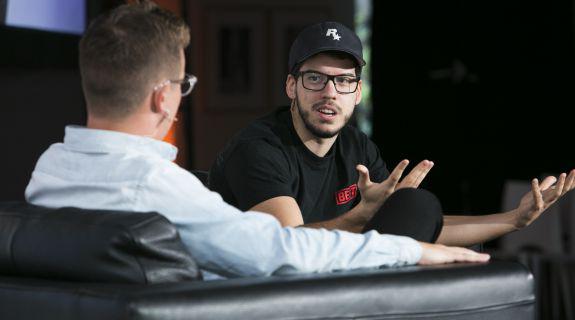In 2015, trade magazine Variety polled teens and found that eight of their top-ten celeb faves were YouTube stars and social influencers such as KSI, PewDiePie and Vanoss Gaming. Pop musicians Bruno Mars and Taylor Swift were the only two mainstream celebrities to crack the list.
That’s an indication of the power of digital creators – those homegrown celebrities on streaming sites such as YouTube and Twitch that regularly post videos of themselves playing video games, putting on makeup or just messing around. Creator TypicalGamer, for example, mostly streams live for as long as an hour and a half at a time, and other livestreamers will stream themselves for six hours. And their fans eat it up.
It’s that kind of passion and engagement that video-game publishers want to tap into, and they are making some headway, said Ryan Wyatt, global head of gaming, YouTube, at the PromaxGAMES Summit in San Francisco on Thursday.
“2015 was all about creators. If you looked at the top-ten videos that year and just looked time spent watching videos – what we call watch time – creators dominated the landscape with 98% of market share. In 2016, publishers started to grow, finding a content cadence that resonates with our audience.”
In 2017, the numbers really started to even out, Wyatt said. So far this year, watch time for the top-ten videos on YouTube have scored nearly 43% watch time for publishers. And the amount of time viewers are spending watch livestreaming is growing as well, jumping to 13.3 percent of viewers’ total time, while on-demand video is watched 86.7 percent of the time.
What that means is that video-game publishers are making headway in the creator space, but there’s always room to increase watch time and fan engagement.
To illustrate this point, Wyatt drew from two examples.
On the creator side, a British group of YouTube creators called Sidemen offer seven channels on the platform and boast more than 50 million subscribers. They’ve written a book that sold 125,000 copies in the UK alone.
They recently decided to stage a live event, in which the Sidemen played in and livestreamed a real soccer match. Some 15,000 fans raised $100,000 for charity around the event. Nearly 3 million people watched live and overall the video had 13.4 million total views.
“This is a blueprint for how publishers should be thinking about hero content,” said Wyatt.
On the publisher side, League of Legends’ publisher Riot Games is a giant in the eSports and digital video space. In the last 90 days alone, Riot has uploaded nearly 1,500 videos that have received a total of 240 million views. It has received 6 million engagements across its Twitter accounts.
“This is a major owned-and-operated network of engaged fans who are driven by content,” said Wyatt.
One of the keys to Riot’s success, says Wyatt, is that it thinks more like a creator than like a publisher trying to market a product.
“Take this different stuff around eSports, fan community, and personalities – the cool thing about Riot is that they don’t just do it when it’s convenient,” said Wyatt. “They start thinking about how important content is as they ramp up to those beats. When they need to dip into that well as a marketing resource, they have it at their disposal.”
With that, Wyatt left the audience with a few key takeaways.
First, act like a creator, not a brand.
Second, just like Riot in the example above, don’t let marketing beats define your content strategy.
And third, humanize your content in scalable ways. For example, the abovementioned TypicalGamer – who appeared later with Wyatt for an on-stage chat – has accrued 421,000 followers on Twitter, 4.8 million YouTube subscribers and more than 1 billion lifetime views on YouTube (and is also a millionaire).
TypicalGamer – also known as Andre – had this advice for the publishers in the audience who are looking to build similarly big followings: “I definitely feel like a lot of publishers put out [a few downloadable content patches per year] and in between there’s not much. To keep the interest of an audience year-round, you have to put out content at least a couple of times a week and focus on community events once in a while. It’s about always keeping that game in people’s minds.”
[Images courtesy of Jasmin VanT]
Tags:













































__twocolumncontent.jpg)











